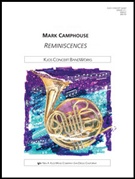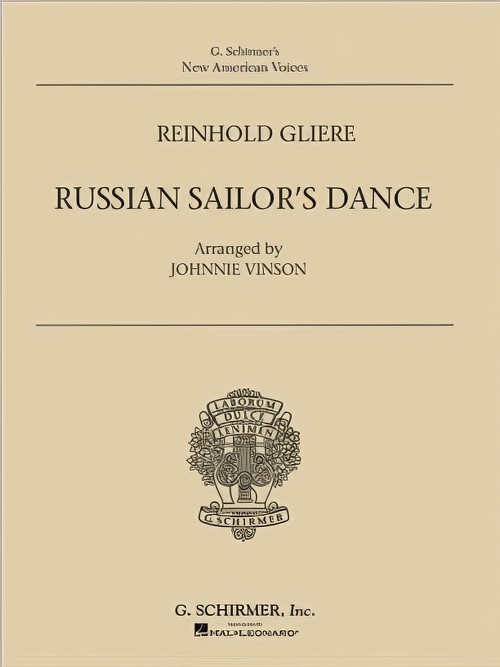Results
-
 £94.99
£94.99Po?'me Fran?'ais (Ballade) Wind Band Set (Score & Parts)
This ballad will take you to the countryside of France, where a genuine peace prevails. Picturesque villages and magnificent vistas in a musical way to show you this magnificent musical tribute to La France. An attractive sonorous melody is the basis for this composition using a effective instrumentation. 04:30
Estimated dispatch 7-14 working days
-
 £72.95
£72.95REMINISCENCES (Concert Band) - Camphouse, Mark
A simple and direct lyrical statement, take your group to the next level of expression with this new work by Mark Camphouse. Dedicated to the memory of Dr. Harry Begian, Reminiscences uses inventive compositional techniques and briefly quotes the hymn "It Is Well with My Soul."
Estimated dispatch 7-14 working days
-
 £69.30
£69.30Rim Shot
Rim Shot provides the perfect opportunity to showcase your top rudimental drummer. The grade 5 solo and the grade 3 accompaniment take a minimal amount of rehearsal time for a successful performance. Opens with a powerful statement from the band and percussion and the solo could be performed with your entire snare drum line if desired. An excellent snare drum showcase that will be a highlight of any concert!
Estimated dispatch 7-14 working days
-
 £65.00
£65.00Rolling Thunder (Concert Band - Score and Parts) - Fillmore, Henry - Glover, Andrew
Oil up the valves and slides, take a deep breath and away you go with one of Henry Fillmore's greatest and most dynamic circus marches. At the circus it was used to generate excitement while on the concert stage it's known as "show-stopper". Your mature band will love this impressive and challenging arrangement of a true march classic!
Estimated dispatch 7-14 working days
-
 £38.50
£38.50Russian Sailor's Dance (Concert Band - Score and Parts)
Here is an exciting opener for inexperienced bands that is guaranteed to sound full! After a fast introduction, the low brass take over at a slow tempo on the familiar melody. From there the excitement builds as the tempo gradually increases right up to the energetic and powerful final chords.
Estimated dispatch 7-14 working days
-
 £71.28
£71.28St. Lawrence Chronicles
Take a historical journey into the heart of the continent along the powerful St. Lawrence River as the early French explorers did. The immensity and beauty of this historic river is captured in bold brass fanfares. Haunting woodwind themes encapsulate the relentless exploration of the New World, and the lush, melodic slow section presents many opportunities for lyrical playing. Ideal for bands of moderate experience, this programmatic composition is perfect for contest, festival and concert performance.
Estimated dispatch 7-14 working days
-
 £41.58
£41.58This Old Dude (Concert Band - Score and Parts)
Take that old favorite "This Old Man", add a rock beat and some hip (but easy) riffs, and what have you got? A great crowd pleaser your students will love to perform. The easy level of the piece makes it perfect for involving your audience--extra percussion parts and hand- claps can easily be added. A great recruiting tool and perfect for that "fun" number at your end of the year concert.
Estimated dispatch 7-14 working days
-
 £64.35
£64.35Three Jazzy Kings
Take a holiday classic and add a little ? swing and what do you get? An entertaining novelty piece that is sure to be the hit of your holiday concert! Based upon the traditional carol "We Three Kings," David Shaffer's exceptional percussion writing and unique scoring techniques give us a true holiday gem in "Three Jazzy Kings."
Estimated dispatch 7-14 working days
-
 £39.50
£39.50Treason and Plot (from 'For England, Harry and St. George') (Concert Band - Score and Parts) - Gorb, Adam
The little pieces that form 'For England, Harry and St. George' may be played individually, in pairs, scattered through a programme or, when given complete, may even be played in a different order. All take their inspiration from the music of mediaeval and renaissance Britain, the scene of political intrigue, social turmoil and military strife. Performers should keep in mind the combination of vigour, mysticism and grandeur which so characterised English music of this bygone age. AB grade 1.5Duration: 02:00
Estimated dispatch 7-14 working days
-
 £84.99
£84.99Una Furtiva Lagrima (Concert Band - Score and Parts)
Una Furtiva Lagrima is a brilliant arrangement by Jacob de Haan, of the aria from Gaetano Donizetti's opera L'Elisir d'Amore (The Elixir of Love) for concert band. The subject of this song is the power of love: Nemorino, the main character of the opera, sings the aria as he notices that his love potion is starting to take effect on his beloved. A furtive tear (Una Furtiva Lagrima) betrays his beloved's feelings towards him in this emotional piece. 0:03:20
Estimated dispatch 7-14 working days
